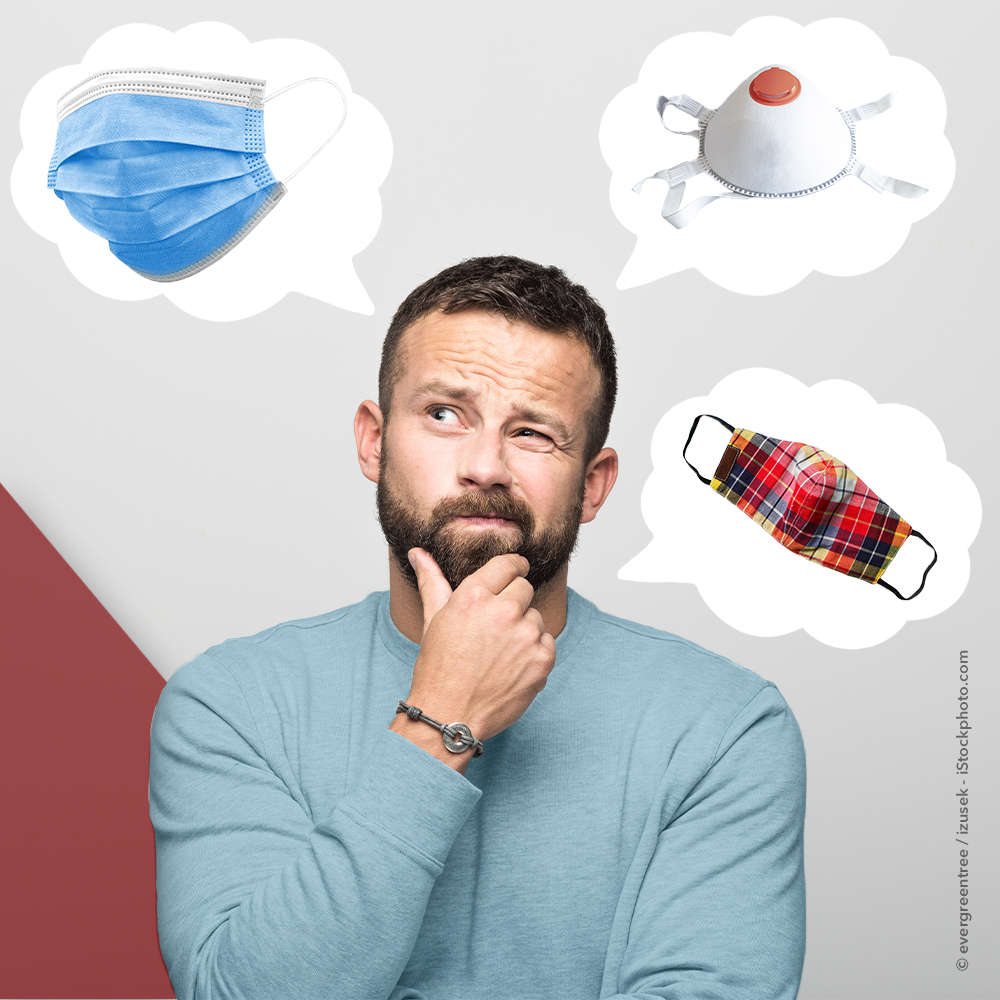 Everyone is talking about the topic of ‘breathing masks’ at the moment. In hospitals among medical staff. And in our homes on the sofa – because we want to be able to go shopping again in the near future, halfway safe from corona infection. Wait a minute though, do we want to protect ourselves from others? Or shield others from ourselves? So self-protection or protection of others? Or can we do both? Let’s take an informative look behind the mask together with today’s blog ‘Practical knowledge Trotec’ …
Everyone is talking about the topic of ‘breathing masks’ at the moment. In hospitals among medical staff. And in our homes on the sofa – because we want to be able to go shopping again in the near future, halfway safe from corona infection. Wait a minute though, do we want to protect ourselves from others? Or shield others from ourselves? So self-protection or protection of others? Or can we do both? Let’s take an informative look behind the mask together with today’s blog ‘Practical knowledge Trotec’ …
Austria has already introduced an obligation to wear breathing masks in supermarkets. In the city of Jena, too, at least the wearing of a scarf in front of the nose and mouth is mandatory. Because at the moment breathing masks are hard to get, the market is empty. This makes it all the more important to find out what types of mask are available – and which are suitable for normal citizens such as us. We are referring to the recommendations of the Federal Institute for Occupational Safety and Health (BAuA).
Scientists and health authorities assume that corona viruses are primarily passed on via droplet and contact infection – i.e. by coughing or sneezing directly or by physical contact with an infected person. The classification of masks reflects this assessment in a ranking: the starting point for assessing the quality of a mask is either the reduction of droplet release or the partial or complete filtration of the droplets. And this depends on the wearer’s intended use: for self-protection or for the protection of others. Or for both ends.
Self-sewn face protection
- does not give the person wearing it any protection against the droplets coughed up or sneezed out by an infected person,
- reduces the danger of ‘smear infection’, through contacting your mouth and nose with your own hand,
- serves mainly to protect others as it reduces the amount of droplets you release in case of infection.
Paper mask
- does not give the person wearing it any protection against the droplets coughed up or sneezed out by an infected person,
- reduces the danger of ‘smear infection’, through contacting your mouth and nose with your own hand,
- serves mainly to protect others as it reduces the amount of droplets you release in case of infection.
Mouth and nose protection (MNS)
Oral and nasal masks primarily protect the patient and less the wearer of the mask. The MNS is not a breathing mask, but primarily reduces the possibility of potentially infectious saliva or mucus droplets from the wearer entering the environment. The thin masks consist of a filter layer embedded between two layers of fabric. Since the MNS does not fit tightly, it does not provide sufficient protection against airborne infection However, the wearer’s mouth and nose can be protected by the mask from contact with contaminated hands. An oronasal mask
- does not give the person wearing it any protection against the droplets coughed up or sneezed out by an infected person,
- reduces the danger of ‘smear infection’, through contacting your mouth and nose with your own hand,
- serves mainly to protect others as it reduces the amount of droplets you release in case of infection.
Particle filtering half mask (FFP mask, face filtering piece)
Particle filtering half masks (FFP masks, face filtering piece) are recommended for the protection of medical personnel. These have a particle retention capacity (< 5 mm) and a defined total leakage. For the maximum Internal leak rate, i.e. the total inward leakage, the calculation for FFP masks of Class 1 is 22 %, for Class 2 8 % and for Class 3 2 %.
As a general rule, FFP 1 masks or corresponding surgical masks should be worn during activities involving contact with suspected cases. FFP 2 masks should be worn when workers are exposed to coughing fits, FFP 3 masks when coughing is provoked, for example during a bronchoscopy.
FFP 1-Masks
- does not give the person wearing it any protection against the droplets coughed up or sneezed out by an infected person,
- reduces the danger of ‘smear infection’, through contacting your mouth and nose with your own hand,
- – is – if there is no exhalation valve -mainly to protect others as it reduces the amount of droplets you release in case of infection.
FFP 2 mask – for a low risk of infection by aerosols
- gives the person wearing it self-protection, as it prevents the inhalation of SARS-CoV-2 – viruses by filtering the droplets,
- reduces the danger of ‘smear infection’, through contacting your mouth and nose with your own hand,
- mainly provides self-protection and, if without an exhalation valve, also protection for others, because it reduces the amount of droplets you release in case of infection.
FFP 3 mask – in case of a high risk of infection by aerosols
- gives the person wearing it self-protection, because it prevents the inhalation of SARS-CoV-2 – viruses by filtering the droplets
- reduces the danger of ‘smear infection’, through contacting your mouth and nose with your own hand,
- mainly provides self-protection and, if without an exhalation valve, also protection for others, because it reduces the amount of droplets you release in case of infection.
Disposable mouth-nose-mask for the protection of others
RKI President Lothar Wieler said in Berlin on Tuesday that wearing a mask is definitely useful to protect others from infection.

